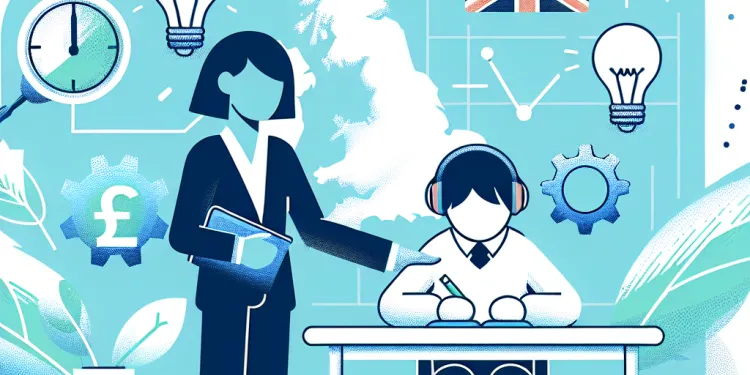
Find A Professional
More Items From Ergsy search
-

What support is available for SEND children in schools?
Relevance: 100%
-
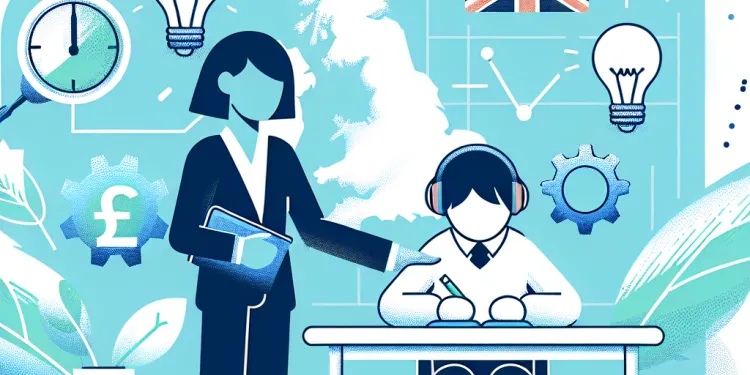
What role do teachers play in supporting SEND children?
Relevance: 95%
-
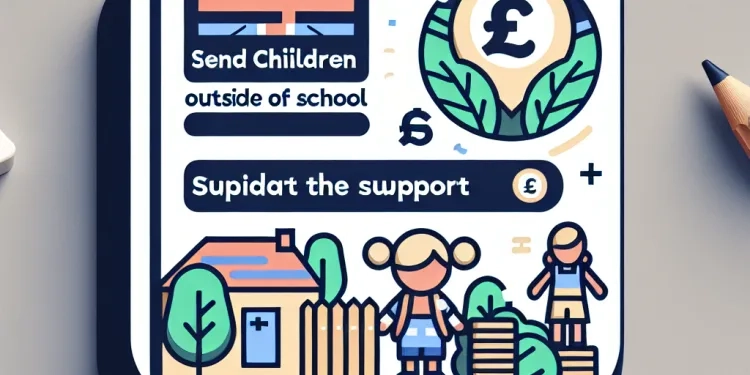
What support is available outside of school for SEND children?
Relevance: 94%
-

What are some common misconceptions about SEND?
Relevance: 88%
-

What are SEND children?
Relevance: 85%
-

Who are SEND children?
Relevance: 85%
-
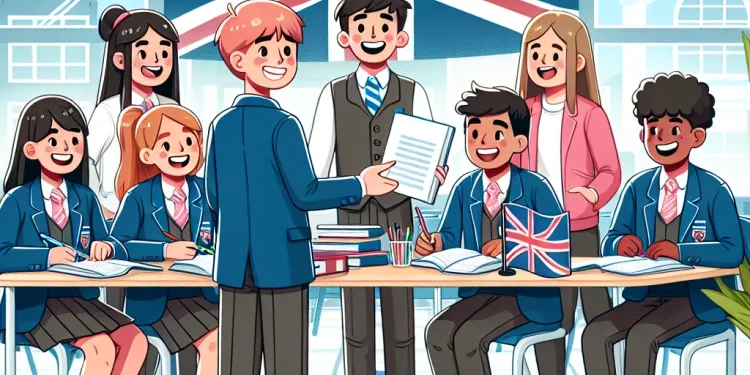
Do SEND children attend mainstream schools?
Relevance: 79%
-

Can SEND children access extracurricular activities?
Relevance: 75%
-

Are there specific laws governing SEND in schools?
Relevance: 70%
-

How do funding and resources affect SEND support?
Relevance: 69%
-

Can SEND status change over time?
Relevance: 68%
-

How can schools create an inclusive environment for SEND children?
Relevance: 65%
-

What does SEND stand for?
Relevance: 65%
-

Who is responsible for assessing SEND needs?
Relevance: 61%
-

How is progress measured for SEND children?
Relevance: 61%
-

How are parents involved in the SEND process?
Relevance: 55%
-
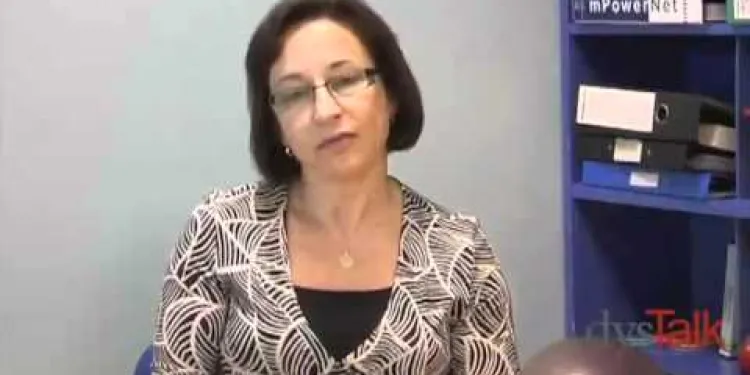
Dyspraxia Children: How to Help
Relevance: 54%
-
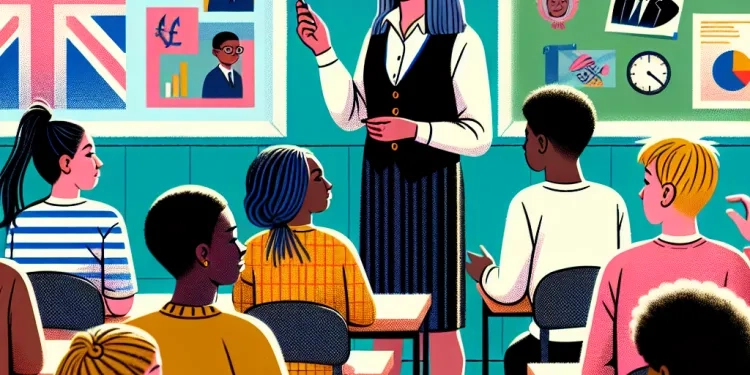
How can teachers support students with ADHD?
Relevance: 48%
-

Can students apply for Cost-of-Living support?
Relevance: 47%
-
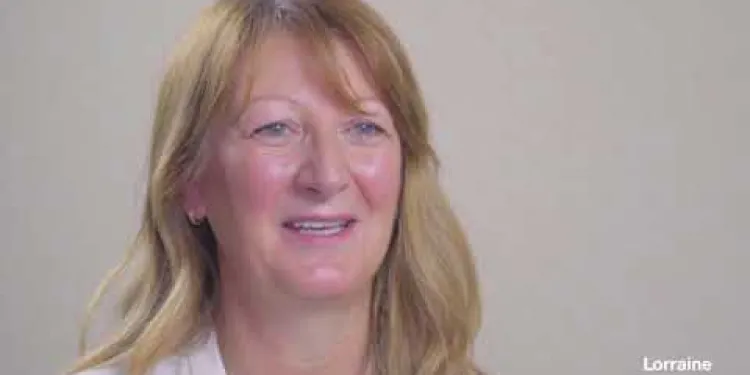
Getting help and support with frontotemporal dementia (FTD) (part 2/3)
Relevance: 46%
-
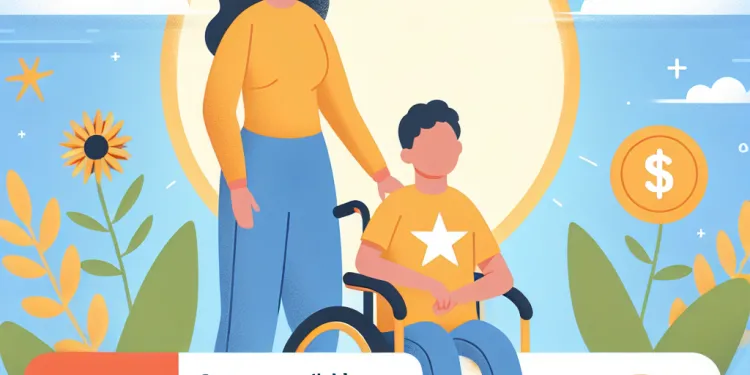
What support is available for families of individuals with PIMD?
Relevance: 44%
-

Are children more affected by new variants of COVID?
Relevance: 42%
-

Mental Health Support Resources for Families
Relevance: 42%
-
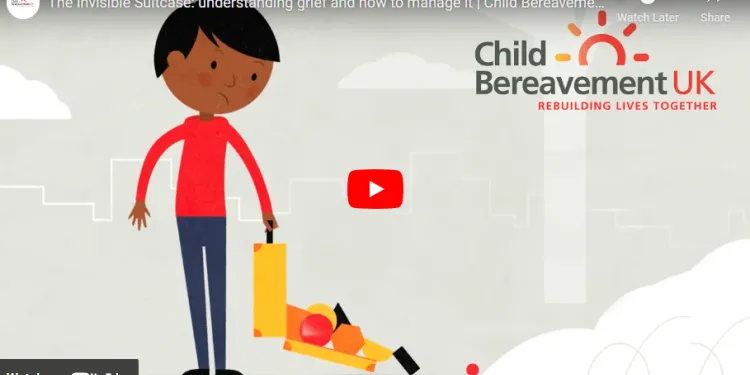
Child Bereavement
Relevance: 40%
-

What is the SENCO's role in a school?
Relevance: 40%
-
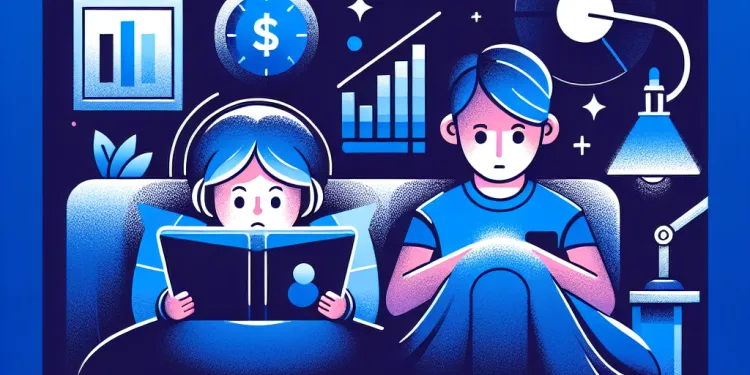
Are children more affected by screen time in relation to sleep than adults?
Relevance: 40%
-

Live Fear Free - The Effect of Domestic Abuse on Children
Relevance: 39%
-

Navigating Mental Health Services for Children and Adolescents
Relevance: 38%
-
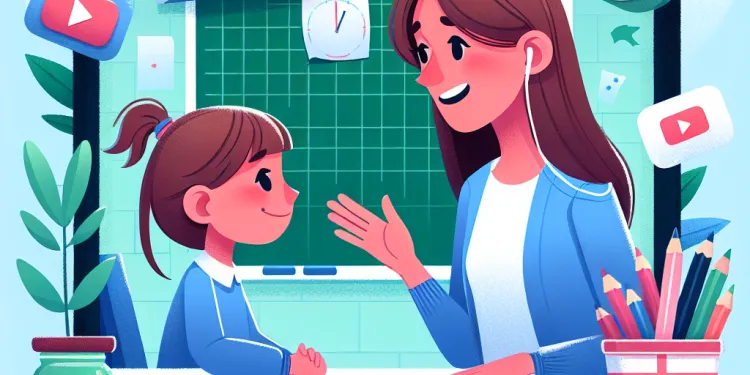
Understanding Mental Health in Children
Relevance: 38%
-

Mental Health Support for Families: Resources and Guidance
Relevance: 38%
-
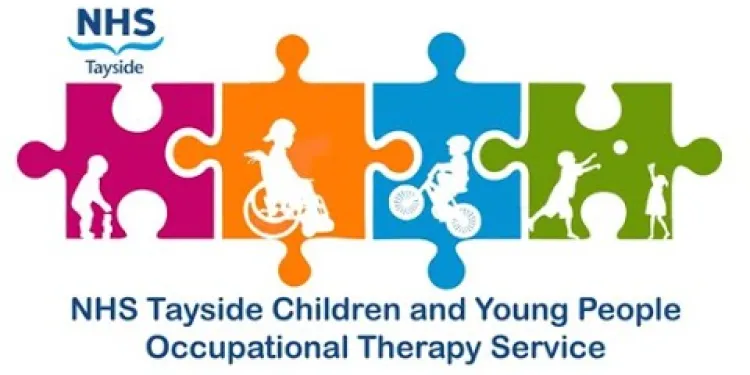
Developmental Coordination Disorder (DCD) for Children and Young People
Relevance: 37%
-

Can children receive the flu vaccine as a nasal spray?
Relevance: 37%
-

Can children get NHS dentist appointments?
Relevance: 37%
-
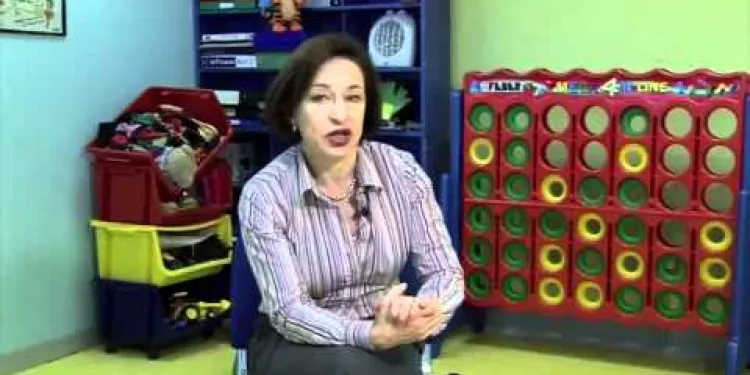
Children With Co-ordination Difficulties and Dyspraxia
Relevance: 36%
-

Can children with disabilities access school meals?
Relevance: 36%
-

Mental Health Support for Families: Resources and Strategies
Relevance: 36%
-

Can children develop Crohn's disease?
Relevance: 36%
-

Can children benefit from chiropractic care?
Relevance: 36%
-
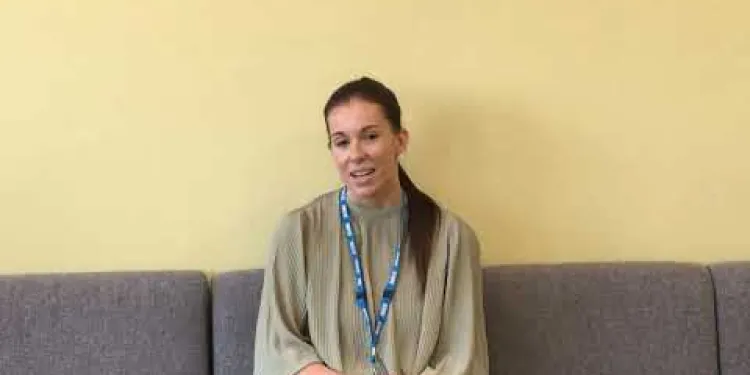
Practical strategies to support young children who stammer
Relevance: 35%
-

NHS Stop Smoking Support in Blackpool - What happens when you use our service
Relevance: 35%
Introduction
In the UK, children with special educational needs and disabilities (SEND) require tailored support to flourish within educational environments. Teachers play a crucial role in ensuring these children's needs are met, fostering an inclusive culture that enables every student to reach their potential. Understanding the multifaceted role of teachers in supporting SEND children is key to appreciating the positive impact they can make on these students' educational journeys.
Identifying SEND Needs
Teachers are often among the first professionals to identify potential SEND in children. By closely observing students' behaviors and academic performance, teachers can recognize signs that may indicate a child requires additional support. Early identification is crucial, as it allows for timely intervention that can significantly enhance educational outcomes. Teachers can then collaborate with parents and special educational needs coordinators (SENCOs) to assess the child's specific needs and plan appropriate support strategies.
Adapting Teaching Strategies
One of the primary roles teachers play in supporting SEND children involves adapting their teaching strategies to accommodate various learning needs. This might include differentiating instruction by modifying the content, process, or learning environment to suit individual students. For example, employing a variety of teaching aids, such as visual supports or assistive technology, can help SEND students better understand the material. Additionally, providing alternative activities or working in small groups can allow these children to engage more effectively with the curriculum.
Creating an Inclusive Environment
Teachers are essential in fostering an inclusive classroom environment where all students feel valued and supported. They encourage understanding and acceptance among students, promoting a culture where diverse needs are respected. Strategies to achieve this may include whole-class discussions about diversity and disability, celebrating the achievements of all students, and implementing buddy systems where peers support each other. By creating an inclusive atmosphere, teachers help SEND children feel more connected to their peers and more confident in engaging with classroom activities.
Collaborating with Specialists and Families
Effective support for SEND children often requires a collaborative approach. Teachers work alongside special educators, SENCOs, educational psychologists, and various therapists to design and implement personalized learning plans. In addition, maintaining strong communication lines with families is essential to ensure consistency between school and home support systems. Teachers regularly update parents on their child's progress, challenges, and achievements, allowing them to take an active role in their child's education.
Conclusion
In conclusion, teachers play a pivotal role in supporting SEND children within the UK education system. Through early identification, tailored teaching strategies, fostering an inclusive environment, and collaborating with specialists and families, teachers contribute significantly to the educational and personal development of these students. Their commitment and dedication to addressing the unique needs of SEND children ensure that these students have the opportunity to succeed and thrive in their educational journey.
Introduction
In the UK, some kids need special help to do well at school. These kids are called SEND, which stands for Special Educational Needs and Disabilities. Teachers help them a lot so they can learn and do their best. It's important to see how teachers help these kids because their help makes a big difference in the kids' learning and growing.
Finding Out Who Needs Help
Teachers are often the first to notice if a kid might need extra help. They watch how kids act and learn in class. If they see a kid struggling, they can help quickly. This early help is important because it gives the kid a better chance to do well in school. Teachers work with the kid's parents and special helpers to figure out what the kid needs and how to help them best.
Changing How We Teach
Teachers change how they teach to help SEND kids learn better. They might use different tools like pictures or technology to make things easier to understand. Teachers also plan different activities or use small groups so every kid can join in and learn in a way that works for them.
Making Everyone Feel Welcome
Teachers make sure every kid feels welcome and supported in the classroom. They teach kids to understand and accept each other. This might include talking about differences and letting kids help each other. When everyone feels included, SEND kids feel happier and more confident to join in class activities.
Working with Others
Helping SEND kids is a team effort. Teachers work with special helpers like psychologists and therapists. They also talk a lot with families to make sure kids get help both at school and at home. By keeping everyone updated on how the kid is doing, families can help their children learn and grow.
Conclusion
Teachers are very important for helping SEND kids in the UK. They find out who needs help, change their teaching ways, make everyone feel included, and work with families and specialists. Thanks to teachers, SEND kids have a better chance to learn and do well in school.
Frequently Asked Questions
What does SEND stand for?
SEND stands for Special Educational Needs and Disabilities.
How do teachers identify SEND children?
Teachers identify SEND children through observations, assessments, and consultations with specialists if necessary.
What role do teachers play in supporting SEND children?
Teachers play a crucial role by creating inclusive learning environments, differentiating instruction, and collaborating with specialists to support SEND children.
How can teachers differentiate instruction for SEND students?
Teachers can differentiate instruction by modifying the content, processes, products, and learning environment to cater to diverse learning needs.
Why is collaboration important in supporting SEND children?
Collaboration with parents, specialists, and other educators ensures a comprehensive support network for SEND children, addressing their needs effectively.
What types of accommodations might be provided for SEND students?
Accommodations can include modified materials, extra time on tests, assistive technology, and alternative assessment strategies.
How can teachers ensure an inclusive classroom environment?
Teachers can promote inclusivity by adopting an attitude of acceptance, celebrating diversity, and implementing universal design for learning.
What role does assessment play in supporting SEND students?
Assessment helps in understanding the abilities and needs of SEND students, guiding instructional decisions and measuring progress.
How can teachers communicate effectively with parents of SEND children?
Teachers can maintain regular communication through meetings, reports, and updates to ensure parents are informed and involved in their child's education.
What is an Individualized Education Plan (IEP)?
An IEP is a document developed for each public school child who needs special education, outlining specific educational goals and services.
How can teachers use technology to support SEND children?
Teachers can use technology like text-to-speech software, interactive whiteboards, and educational apps to support various learning needs.
What strategies can teachers use for behavior management in SEND students?
Behavior management strategies include positive reinforcement, clear expectations, and individualized behavior intervention plans.
How do teachers plan lessons for a diverse group of learners?
Teachers plan lessons using differentiated instruction, flexible grouping, and scaffolding to meet the varied needs of learners.
Why is professional development important for teachers of SEND learners?
Professional development keeps teachers informed about best practices, new methodologies, and advancements in special education.
What is the role of a teaching assistant in supporting SEND children?
Teaching assistants provide additional support in the classroom, assist with individual or small group work, and help implement IEPs.
How do teachers handle SEND students with physical disabilities?
Teachers provide appropriate accommodations, ensure accessible environments, and collaborate with specialists to support physical disabilities.
What is universal design for learning (UDL)?
UDL is a framework for teaching that provides all students with equal opportunities to learn by catering to diverse learning preferences.
How can teachers address language and communication needs in SEND students?
Teachers can use visual aids, sign language, augmentative communication devices, and collaborate with speech and language therapists.
How can teachers motivate SEND students?
Teachers can motivate SEND students by setting achievable goals, using interests to drive learning, and recognizing and celebrating successes.
What are some common challenges teachers face when supporting SEND students?
Challenges include diverse needs, limited resources, time constraints, and ensuring adequate training and support for teachers.
What does SEND mean?
SEND stands for "Special Educational Needs and Disabilities."
Here are some tips to help understand:
- Special: This means something different or extra.
- Educational: This is about learning and school.
- Needs: These are things someone must have or needs help with.
- Disabilities: These are challenges that can make learning and other things harder.
You can use these tools:
- Pictures: Look at pictures to help understand the words.
- Ask for help: It’s okay to ask a teacher or friend if you’re unsure.
- Break it down: Read one word at a time and take it slow.
SEND means Special Educational Needs and Disabilities. These are extra help some children might need at school to learn better.
How do teachers know if a child needs extra help?
Teachers find children who need extra help by watching them, giving them tests, and talking to experts when needed.
How do teachers help children with SEND?
Teachers help children with SEND (Special Educational Needs and Disabilities) in many ways. They make learning easier by using different tools and methods. Teachers listen to the children and understand what they need.
Tools like pictures, simple words, and videos can help. Teachers work with parents and other helpers to support the children.
Teachers have an important job. They make sure all children can learn well. They change how they teach to help each child. They also work with experts to help children with special needs.
How can teachers change lessons for SEND students?
Teachers can help SEND students by making lessons simpler and more fun.
Here are some ways to do this:
- Use pictures and videos to explain ideas.
- Give clear and short instructions.
- Offer extra time for tasks.
- Break big tasks into smaller steps.
- Use games and activities to learn.
- Ask students to work in pairs or small groups.
- Give praise and encouragement.
Tools that can help:
- Computers or tablets for learning apps.
- Audio books to listen to stories.
- Visual schedules to show the day's plan.
These ideas help all students learn better.
Teachers can change how they teach to help all students learn. They can use different ideas, ways of teaching, things to make, and places to learn.
Why is working together important for helping children with SEND?
Working together means teachers, parents, and helpers all help each other. This makes it better for children who need extra help.
Everyone can share ideas and talk about what a child needs. This helps the child learn and feel good at school.
Using tools like pictures, games, and simple words can help. It makes learning fun and easier for everyone.
Working together with parents, experts, and teachers helps support children with special learning needs. This teamwork makes sure the children get the help they need.
What help can SEND students get at school?
Students with Special Educational Needs and Disabilities (SEND) can get extra help at school. Here are some ways schools can help:
- Extra Time: Some students can get more time to finish tests or tasks.
- Special Tools: Schools might give students special tools like computers, tablets, or software to help them learn.
- Help from an Adult: A teaching assistant or special teacher can work with the student.
- Quiet Room: Students can have a quiet place to work if they find noise hard.
- Different Work: The school can give students work that is just right for them.
If you think you need help, talk to your teacher or parent. They can make a plan to help you do your best at school.
Accommodations are changes that can help you learn better. These might include:
- Materials that are easier to understand
- More time to finish tests
- Special tools like a computer or tablet to help
- Different ways to show what you have learned
How can teachers make all kids feel welcome in class?
Teachers can make sure every child feels included by doing a few simple things. Speak clearly and use simple words. Make sure everyone's ideas are heard. Use pictures and stories to explain things. Help kids work together and be friends.
If a child needs extra help, use tools like audio books or bright pictures. Let kids use things like colored pens or computers to do their work. Encourage everyone to be kind and respect each other.
Teachers can help everyone feel included by being kind to everyone, celebrating differences, and using different ways to help students learn.
How does checking learning help students with SEND?
Checking learning, or assessment, is when teachers see how much a student understands. This is very important for students with SEND (Special Educational Needs and Disabilities). It helps teachers know what these students need to learn better.
Here are some ways checking learning helps:
- Planning: Teachers can make better plans for each student. They find out what each student needs help with.
- Support: Checking learning shows what tools or help a student might need, like extra time or special tools.
- Progress: It shows if the student is getting better at learning new things.
To help with checking learning, some tools or methods can be useful:
- Simple tests or quizzes to see what the student knows.
- Talking with the student about what they find easy or hard.
- Using special apps or tools that help students with their work.
By checking learning, teachers make sure every student gets the help they need.
Assessment helps teachers know what SEND students can do and what they need help with. It guides how teachers teach and checks if students are making progress.
How can teachers talk well with parents of SEND children?
Teachers need to talk with parents. These parents have children with SEND. SEND means Special Educational Needs and Disabilities.
Here is how teachers can talk better:
- Use simple words when talking.
- Listen to what parents say.
- Ask parents what their child needs.
- Share how the child is doing at school.
- Meet or call often to talk.
Tools teachers can use:
- Write notes or emails to parents.
- Use pictures and charts to explain.
- Apps to send messages.
When teachers and parents talk well, children get better help at school.
Teachers can talk to parents often. They can have meetings, write reports, and give updates to make sure parents know what is happening with their child's learning.
What is an IEP?
An IEP is a plan for a student. It helps with learning at school. The plan is just for that student. It helps teachers know how to help the student learn better.
Tools like pictures or charts can help. They make it easier to understand. Talking about the plan with someone can also help. That way, you can ask questions if you need to.
An IEP is a paper that helps plan school for kids who need extra help in their learning. It says what goals the child has and what help they will get at school.
How can teachers help children with SEND using technology?
Teachers can use computers, tablets, and other tools to help children with SEND (Special Educational Needs and Disabilities). Here are some ways to do this:
1. Use learning apps: Teachers can use special apps to make learning fun and easier. These apps can help children read, write, and do math.
2. Play educational games: Games can help children learn new things in a fun way. Teachers can find games that help with reading, math, and other subjects.
3. Watch videos: Videos can explain ideas in a way that is easy to understand. Teachers can show videos that match what the children are learning in class.
4. Use speech tools: Some tools can read words out loud. This helps children who find reading hard. It can also help with writing by typing what the child says.
5. Try touch screens: Tablets with touch screens can be easier for some children to use. Teachers can let children touch and move things on the screen to learn.
By using these tools, teachers can make learning better for all children, including those with SEND.
Teachers can use technology to help students learn. They can use tools like talking computers, smart boards, and learning apps to support different ways people learn.
How can teachers help SEND students behave well?
Here are some tips for teachers:
- Use a clear, calm voice.
- Set simple rules with pictures.
- Give rewards for good behavior.
- Be patient and kind.
- Use a visual timetable to show the day's plan.
- Work with parents to know what helps the child.
- Use tools like apps or timers.
Ways to help with behavior include giving rewards when someone does something good, telling them clearly what you want them to do, and making special plans if someone needs extra help.
How do teachers plan lessons for different kinds of students?
Teachers think about what each student needs. They learn what helps each person understand. They use tools like pictures or stories.
Here are ways they plan lessons:
- Talk about the topic: Start with simple ideas. Use easy words and explain them slowly.
- Use pictures and stories: Pictures help to see what the teacher is talking about. Stories make ideas fun.
- Group work: Students can learn together. They help each other.
- Take breaks: Short breaks help students rest and think.
- Ask questions: Teachers ask questions to see what students know. Students can ask too.
These tools help teachers teach every student in the best way.
Teachers make lessons in different ways. They use different tools and groups. This helps all students learn in the best way for them.
Why is it important for teachers of SEND learners to keep learning?
Teachers who work with SEND learners help students with special educational needs and disabilities. They need to keep learning new things to do their job well. This is called professional development.
Professional development helps teachers:
- Learn new ways to help their students.
- Understand better what their students need.
- Make school a good place for all students.
Teachers can use tools like workshops, online courses, and talking with other teachers to learn more. This helps them do their best for SEND learners.
Professional development helps teachers learn the best ways to teach. It shows them new ways to help students and teaches them better ways to help kids who need extra support.
How does a teaching assistant help children with SEND?
A teaching assistant helps children who find learning hard. These children are often called SEND, which means Special Educational Needs and Disabilities.
Here is how a teaching assistant helps:
- Friendly support: They listen and help when a child needs it.
- Extra help: They explain things in simple ways.
- Special tools: They use things like picture cards or fun games to help with learning.
- Building confidence: They encourage children to try new things.
Teaching assistants are important. They make sure every child has the help they need to learn and grow.
Teaching assistants help teachers in the classroom. They work with one person or small groups of students. They also help with special learning plans.
How do teachers help students with physical disabilities?
Teachers can do many things to help students who have physical disabilities. Here are some ways:
- Make the classroom easy to move around. Teachers can keep pathways clear so students can use wheelchairs or walkers.
- Use special tools. These can include things like computer programs that help students type or speak.
- Have extra help. Sometimes teachers work with teaching assistants who can give students extra support.
- Plan for breaks. Teachers can let students take breaks when needed to rest or move around.
- Talk to the students. Teachers should ask students what they need to learn best.
These are just a few ways teachers can help. Every student is different, so teachers try to listen and find the best ways to support each one.
Teachers help students with physical disabilities by making things easier for them. They make sure classrooms are set up so everyone can use them. Teachers also work with other experts to give the help students need.
What is universal design for learning (UDL)?
Universal Design for Learning (UDL) is a way to help everyone learn. It makes learning easier for all students by using different methods. This way, each person can find what works best for them.
Key Points of UDL:
- Use different ways to learn. For example, reading, watching videos, or using hands-on activities.
- Let students show what they know in different ways, like drawing, writing, or speaking.
- Help students stay interested by offering choices and making learning fun.
Here are some tools that can help:
- Audio books for listening to stories.
- Apps that turn speech into text or text into speech.
- Visual aids like pictures and charts.
UDL is a way of teaching that helps every student learn. It makes sure all students have the same chances to learn, no matter how they like to learn.
How can teachers help students with SEND who have trouble with talking and understanding?
Teachers can use simple words and speak slowly. They can use pictures to help show what they mean. Teachers can also use hand signs or gestures. It is good to repeat things to make sure everyone understands.
Teachers can ask students questions to see if they need extra help. They can talk to other teachers who know about helping students with SEND.
Teachers can use pictures and signs to help students understand. They can also use special devices that help people talk and work with experts who help with speaking and understanding words.
How can teachers help SEND students feel excited to learn?
Teachers can use different ways to help SEND students want to learn:
- Be Positive: Always say good things to make students feel happy and confident.
- Use Fun Activities: Try games or fun tasks to make lessons interesting.
- Give Praise: Tell students "Good job!" when they do well, to make them feel proud.
- Break Work into Small Steps: Make big tasks smaller, so they are easier to do.
- Use Pictures and Videos: Show pictures or videos to help them understand better.
- Let Them Choose: Give students some choice in what they learn, so they feel in control.
- Use Helpful Tools: Tools like reading pens or special keyboards can make learning easier.
These ideas can make learning fun and help SEND students learn better.
Teachers can help students by:
- Setting small and easy goals they can reach.
- Finding out what they like and using it to make learning fun.
- Saying "Well done!" when they do something good.
To make learning easier, teachers can use:
- Pictures and videos to explain things.
- Extra time for tasks.
- Reading tools or apps.
Ask for help if you are stuck. It's okay to ask questions.
What are some common problems teachers face when helping SEND students?
Teachers often try hard to help all students, including those with special educational needs and disabilities (SEND). Here are some problems they might face:
Understanding Needs: Every SEND student is different. Teachers need to understand each student's needs, which can be hard.
Time: Teachers have lots to do. It can be hard to find extra time to give SEND students the help they need.
Resources: Sometimes there aren't enough tools or materials to help SEND students learn better.
Training: Teachers might need more training to learn the best ways to help SEND students.
Class Size: Big classes can make it tricky for teachers to give special attention to SEND students.
Helpful tools like speech-to-text apps or picture cards can make learning easier for SEND students. Teachers working with learning specialists can also help a lot.
There are some problems we face. People have different needs. We don’t have enough resources. There is not much time. We also need to make sure teachers get the right help and training.
Useful Links
- Ergsy carfully checks the information in the videos we provide here.
- Videos shown by Youtube after a video has completed, have NOT been reviewed by ERGSY.
- To view, click the arrow in centre of video.
- Most of the videos you find here will have subtitles and/or closed captions available.
- You may need to turn these on, and choose your preferred language.
- Go to the video you'd like to watch.
- If closed captions (CC) are available, settings will be visible on the bottom right of the video player.
- To turn on Captions, click settings .
- To turn off Captions, click settings again.
More Items From Ergsy search
-

What support is available for SEND children in schools?
Relevance: 100%
-

What role do teachers play in supporting SEND children?
Relevance: 95%
-

What support is available outside of school for SEND children?
Relevance: 94%
-

What are some common misconceptions about SEND?
Relevance: 88%
-

What are SEND children?
Relevance: 85%
-

Who are SEND children?
Relevance: 85%
-

Do SEND children attend mainstream schools?
Relevance: 79%
-

Can SEND children access extracurricular activities?
Relevance: 75%
-

Are there specific laws governing SEND in schools?
Relevance: 70%
-

How do funding and resources affect SEND support?
Relevance: 69%
-

Can SEND status change over time?
Relevance: 68%
-

How can schools create an inclusive environment for SEND children?
Relevance: 65%
-

What does SEND stand for?
Relevance: 65%
-

Who is responsible for assessing SEND needs?
Relevance: 61%
-

How is progress measured for SEND children?
Relevance: 61%
-

How are parents involved in the SEND process?
Relevance: 55%
-

Dyspraxia Children: How to Help
Relevance: 54%
-

How can teachers support students with ADHD?
Relevance: 48%
-

Can students apply for Cost-of-Living support?
Relevance: 47%
-

Getting help and support with frontotemporal dementia (FTD) (part 2/3)
Relevance: 46%
-

What support is available for families of individuals with PIMD?
Relevance: 44%
-

Are children more affected by new variants of COVID?
Relevance: 42%
-

Mental Health Support Resources for Families
Relevance: 42%
-

Child Bereavement
Relevance: 40%
-

What is the SENCO's role in a school?
Relevance: 40%
-

Are children more affected by screen time in relation to sleep than adults?
Relevance: 40%
-

Live Fear Free - The Effect of Domestic Abuse on Children
Relevance: 39%
-

Navigating Mental Health Services for Children and Adolescents
Relevance: 38%
-

Understanding Mental Health in Children
Relevance: 38%
-

Mental Health Support for Families: Resources and Guidance
Relevance: 38%
-

Developmental Coordination Disorder (DCD) for Children and Young People
Relevance: 37%
-

Can children receive the flu vaccine as a nasal spray?
Relevance: 37%
-

Can children get NHS dentist appointments?
Relevance: 37%
-

Children With Co-ordination Difficulties and Dyspraxia
Relevance: 36%
-

Can children with disabilities access school meals?
Relevance: 36%
-

Mental Health Support for Families: Resources and Strategies
Relevance: 36%
-

Can children develop Crohn's disease?
Relevance: 36%
-

Can children benefit from chiropractic care?
Relevance: 36%
-

Practical strategies to support young children who stammer
Relevance: 35%
-

NHS Stop Smoking Support in Blackpool - What happens when you use our service
Relevance: 35%